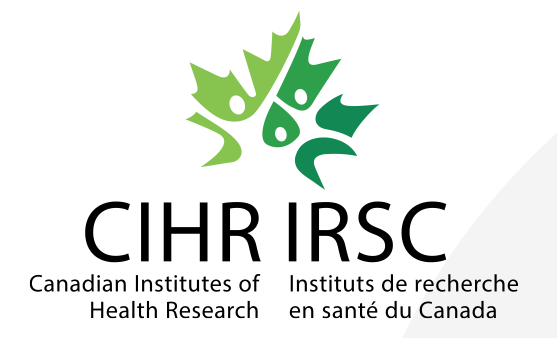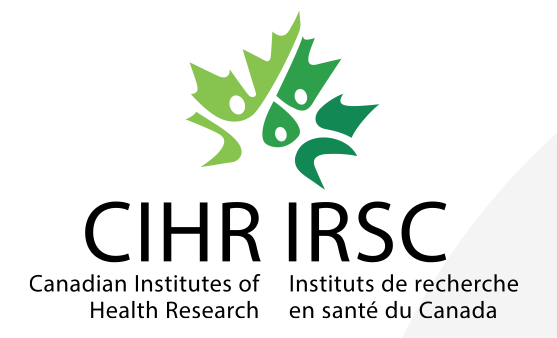Faculty Receive Over $3,000,000 in CIHR Grants

 The Canadian Institutes for Health Research (CIHR) has released their most recent grant decisions, and our faculty's projects have been included with over $3,000,000 worth of grants being funded for those affiliated with the Department of Obstetrics and Gynaecology.
The Canadian Institutes for Health Research (CIHR) has released their most recent grant decisions, and our faculty's projects have been included with over $3,000,000 worth of grants being funded for those affiliated with the Department of Obstetrics and Gynaecology.
Congratulations to the primary investigators and co-investigators included in the below grant submissions (alphabetically listed by surname)!
- Dr. Elizabeth Asztalos, Cross-Appointed Professor
- Dr. Isabella Caniggia, Professor
- Dr. Denice Feig, Cross-Appointed Associate Professor
- Dr. Ann Kinga Malinowski, Associate Professor
- Dr. Kellie Murphy, Professor
- Dr. Tim van Mieghem, Associate Professor
Primary Investigator: Caniggia, Isabella
Co-Investigators: Briollais, Laurent; Feig, Denice S; Klemetti, Miira M; Post, Martin
Funding Amount: $997,180
Abstract: Globally, an increasing number of pregnancies are complicated by diabetes, paralleling the obesity trends in women of child-bearing age. These pregnancies carry a significant risk of complications for the mother and the baby, both during and after pregnancy. In fact, later in life, women with a history of diabetes during pregnancy and their offspring, are at higher risk of developing cardiovascular and metabolic diseases. The placenta, strategically positioned between the mother and the fetus, likely mediates these feto-maternal complications, but the mechanisms involved remain elusive. Lipids, classically thought to be purely structural elements of the cell membrane, are now recognized as key mediators in normal processes and in the development of a variety of diseases. However, global lipid profiles across gestation in pregnant women with diabetes of varying severity have never been characterized. This proposal builds upon a series of novel experiments in which we will define lipid changes across gestation in vesicles, called exosomes that are released from the placenta and travel in the maternal and fetal circulations to target a variety of organs. These vesicles can act as messengers that modify the well-being of target cells like those of blood vessels. Hence, in addition, we will investigate the effect of these vesicles on cellular events linked to cell-death in blood vessel cells.
Title: The maternal gut microbiome as a target to prevent fetal spina bifida
Primary Investigators: Connor, Kristin L; van Mieghem, Tim
Co-Investigators: Burton, Jeremy P; Gloor, Gregory B; MacFarlane, Amanda
Funding Amount: $761,175
Abstract: Spina bifida, one of the most common birth defects, occurs when the spine does not close properly before birth. It is associated with poor development of the baby before birth, and after birth, babies born with spina bifida have paralysed limbs and developmental delay. Key risk factors for spina bifida are low levels of folic acid and vitamin B12 in the mother's blood in early pregnancy. Currently, the primary prevention strategy is to increase a woman's intake of folic acid through food or vitamins. Yet, 1 in 4 women still have low vitamin levels and only ~50% of cases of spina bifida are prevented. An important contributor to healthy nutrient levels are the bacteria (microbiome) in the gut. A healthy gut microbiome can produce up to 30% of the daily required folic acid and vitamin B12, supports nutrient absorption, and produces molecules that can affect transport of these and other nutrients by the placenta to influence development of the baby. We think the gut microbiome plays a critical role in vitamin regulation in pregnancy and an abnormal gut microbiome may cause some cases of spina bifida. To test our hypotheses, we will compare the gut microbiomes of pregnant women carrying a baby with spina bifida with the microbiomes of women carrying a healthy baby. We will examine how specific changes in the microbiome correlate with vitamin levels in the maternal blood and the development and function of the placenta, including nutrient transport. We will use a mouse model of spina bifida to test if modifying the maternal microbiome using dietary interventions like probiotics can potentially reduce the rate of spina bifida and improve placental function. Lastly, we will administer probiotics to non-pregnant women to determine if it improves their vitamin levels and is a safe, acceptable, and feasible intervention. Findings from our study will help us understand how spina bifida occurs and, ultimately, find new ways to prevent spina bifida and improve development.
Primary Investigator: Feig, Denice S
Co-Investigators: Asztalos, Elizabeth V; Dewey, Deborah M; Donovan, Lois E; Fantus, Ivan G; Hamilton, Jill K; Haqq, Andrea M; Karanicolas, Paul J; Lipscombe, Lorraine; Murphy, Kellie E; Sanchez, J. Johanna; Simmons, David; Tomlinson, George A; Yamamoto, Jennifer
Funding Amount: $633,804
Abstract: The incidence of diabetes in pregnancy is rising, with rates of 1 in 7 pregnancies globally. Metformin is used for type 2 diabetes (T2DM) outside of pregnancy and is now increasingly prescribed during pregnancy. There are some concerns as metformin crosses the placenta and effects on offspring exposed during pregnancy are unknown. Animal and human evidence indicate that metformin may create an atypical in-utero environment similar to under-nutrition which has been associated with adult obesity. This is supported by studies in children of mothers treated with metformin in other populations where an increase in childhood obesity was found at 4-9 years of age. We now have evidence from the MiTy trial, that offspring of metformin-exposed women with T2DM have less large infants and are less adipose at birth, but are also more likely to be small for gestational age (SGA). These effects could lead to benefit or harm in the long-term. Offspring of MiTy mothers are currently being followed up to 2 years. Given that long-term effects may not be evident until 5 years of age, it is imperative to follow these children longer. Goals/Research Aims: To determine whether in-utero exposure to metformin, in offspring of women with T2DM, is beneficial or harmful in the long-term. Research Questions: 1. In offspring of women with T2DM, how does treatment with metformin during pregnancy affect a) adiposity b) growth over time c) metabolic syndrome 2. What factors predict altered childhood adiposity and insulin resistance in these offspring? Methods/Approaches/Expertise Primary Outcome: Body mass index (BMI) z-score Secondary Outcomes: 1) other measures of adiposity ie skinfolds, 2) growth over time 3) measures of insulin resistance 4) adipocytokines Expected Outcomes Given these increasing concerns, this study will inform the best treatment for pregnant mothers with diabetes by studying the long-term outcomes of children exposed to metformin during pregnancy.
Primary Investigators: Skeith, Leslie; Malhamé, Isabelle; Malinowski, Ann K
Co-Investigators: Bates, Shannon M; Chan, Wee Shian; Chow, Lorraine; Duffett, Lisa; El-Chaar, Darine; Gibson, Paul S; Le Gal, Grégoire; Lee, Adrienne; Metcalfe, Amy L; Rodger, Marc A; Shehata, Nadine; Simard, Camille; Tagalakis, Vicky; Wood, Stephen L
Funding Amount: $742,052
Abstract: Pregnant women are on daily injectable blood thinners if they are at risk of a blood clot in their legs (deep vein thrombosis) or lungs (pulmonary embolism) during pregnancy. This includes patients who have already had a blood clot, or those at risk of blood clots. While being on blood thinners helps to prevent blood clots, it can lead to complications at the time of labor and delivery. Being on blood thinners may increase the chance of heavier bleeding at the time of delivery, and may limit the ability to get an epidural anesthesia for pain control. Being off of blood thinners may increase the chance of getting a blood clot. Around the world, physicians recommend different strategies for what to do with the blood thinners around labor and delivery, and we do not know what the best strategy is. We will we follow pregnant women on injectable blood thinners at 13 hospitals around the world, to see what happens with their blood thinners at the time of labor and delivery, and the postpartum period. We will get blood work to measure a blood count and blood thinner level on the day of delivery, and a blood count 24 hours after delivery. We will collect information about the amount of blood lost at the time of delivery and other delivery details. We will see or call participants at 6 weeks and 90 days postpartum to assess for complications of bleeding, blood clots, and wound complications. Because the patient experience is very important, we will also ask participants about the choices they made and satisfaction with their delivery experience. We will also collect information about hospital resources used with each of the different management strategies. By better understanding what practices are happening around the world and collecting outcome information in a similar way at all participating centres, we can provide doctors and patients with more information about the risks and benefits of the different options of blood thinner management around delivery.
_____________________________________________________________
Don't want to miss a post? Follow us on social media for more news!
FACEBOOK | INSTAGRAM | TWITTER
If you would like to be a guest blogger, please contact us at obgyn@utoronto.ca.
